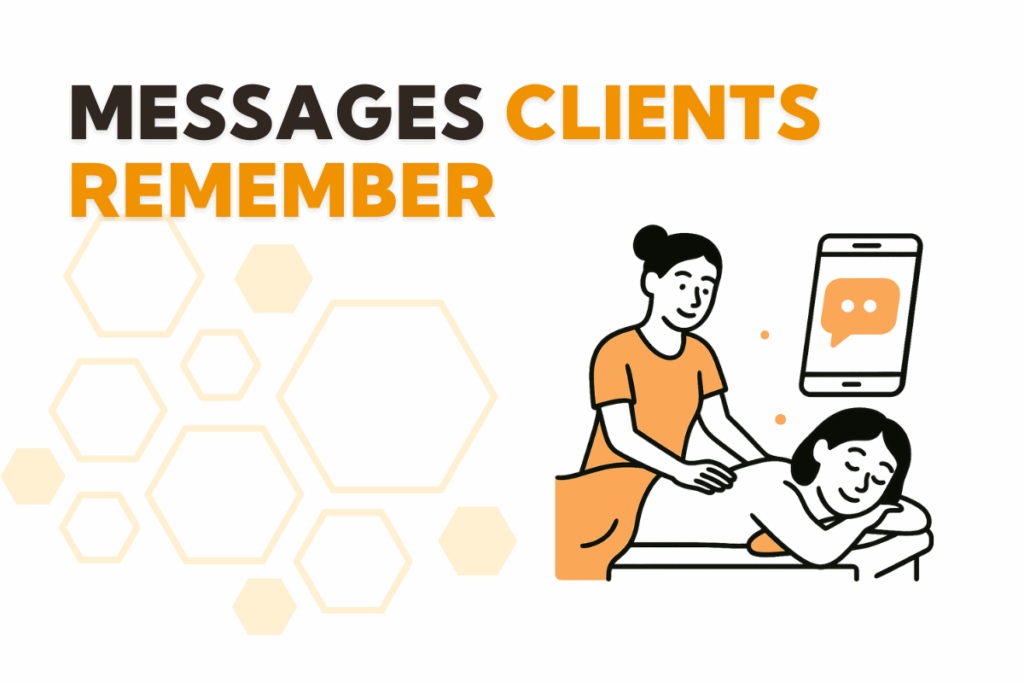Personalized follow-up messages can be the difference between a client feeling truly valued and one seeing your note as just another system ping. Many therapists remember the days of handwritten thank-you notes that clients kept on their fridge or mentioned months later. Those moments created trust, connection, and loyalty. Today, however, many clinics rely on generic templates that blend into the clutter of busy inboxes. The warmth is missing, and so is the response rate.
What Changed: From Keepsake Notes to Generic Messages
The old magic was detail
Handwritten notes worked because they were personal. They referenced something from the session, acknowledged progress, or mentioned an upcoming event in the client’s life. That level of care made every message feel special.
The new problem clients face
Automated notifications are everywhere. Without thoughtful personalization, even well-timed reminders look like standard system alerts. Personalized follow-up messages that lack human detail can be easily ignored.
The therapist’s challenge
Therapists and clinic owners want to protect client relationships but also need to manage time. Balancing genuine connection with efficient communication is not always simple.
Defining the Real Problem: Personalization Got Lost
Signs you are losing connection
- Clients no longer respond to your follow-ups
- No-show rates slowly increase
- Rebooking rates from reminders drop
Why this matters
Personalized follow-up messages are not just polite extras. They are powerful tools for building retention, encouraging treatment plan compliance, and creating a sense of belonging.
Bringing Warmth Back to Personalized Follow-Up Messages
Write like you talk
Use the same tone you would in the treatment room. Replace formal, corporate phrases with natural, friendly language.
Add one specific detail
A single line that recalls a client’s concern, progress, or goal can turn generic text into a meaningful touchpoint.
Use a simple message structure
- Name and session context
- Specific session detail
- Helpful tip or aftercare reminder
- Clear next step
- Sign off personally
Make smart use of tools
Automate scheduling and structure but keep space for your voice. Massage therapy business automation tools can handle timing and compliance while you focus on connection.

Timing and Respect in Your Messages
Send within 72 hours
Same-day thank-you notes followed by 24–48 hour aftercare reminders keep you fresh in mind. A 7-day check-in helps maintain momentum.
Honor client boundaries
Sending personalized follow-up messages at respectful times shows thoughtfulness and professionalism.
Human-in-the-Loop Automation
Automate what saves time
Use automation for consent tracking, scheduling, and templates. Keep personalization and final touches human.
Create a quick daily routine
Spend ten minutes reviewing session notes and personalizing the day’s messages.
Segment wisely
Group clients based on their treatment stage and goals to ensure personalized follow-up messages stay relevant.
Small Touches Keep It Real
Even in a digital-first workflow, little touches make a big difference. Add a photo to your signature, record a quick voice note, or send seasonal check-ins. Multi-location massage clinic management ensures these gestures are consistent across all branches.

Bringing Connection Back
This is not about choosing between handwritten notes and system messages. It is about ensuring personalized follow-up messages feel as warm as the care you give in your treatment room. When your messages reflect genuine attention, clients respond, rebook, and stay connected for the long term.
FAQs
Use natural language, reference one specific session detail, and sign off with your own name.
Send a thank-you within hours, then follow with aftercare within 24–48 hours.
Yes. Messages that feel personal and thoughtful can increase rebooking and lower no-show rates.
Use shared templates and management tools so every client receives the same warm, consistent experience.


